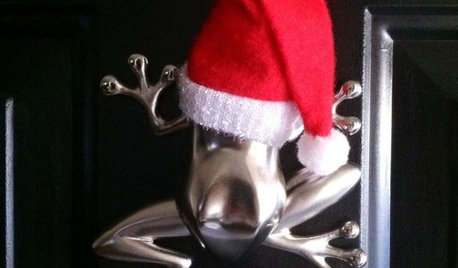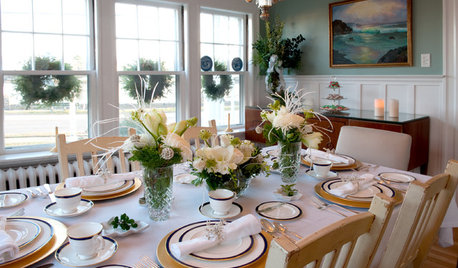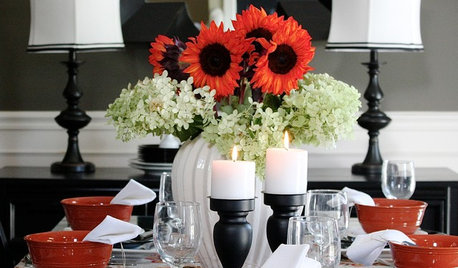Happy Holidays and New Year's Wishes
susanlynne48
11 years ago
Related Stories

HOLIDAYSSimple Pleasures: Welcoming the New Year
Got the champagne and party hats but stumped about what to do next? Try these festive entertaining ideas to ring in the new year
Full Story
HOLIDAYSA Thanksgiving Tradition to Last the Whole Year
Looking for a thoughtful yet simple way to capture your family's gratitude? Grab a jar and paper
Full Story
COLORMarch Into Year-Round Chic With 15 Twists on Red, White and Blue
Parade your patriotism and your style sophistication with new looks for a classic color trio. Drumroll, please ...
Full Story
ARCHITECTUREAn Architect's Wish List for the New Year
Have a better relationship with your home and neighbors this year with these forward-thinking ideas
Full Story
DECORATING GUIDESTwinkle Lights Keep the Holiday Spirit Year-Round
Hate to take down your outdoor lights after the holidays? Here are 12 great ways to use these festive sparklers inside your home
Full Story
Houzz Gifts: Chic Holiday Tableware That'll Work All Year [Video]
Lay out these hand-picked designer’s choices from Houzz, and you’ll be set for special events and everyday meals alike
Full Story
LIFEYou Said It: ‘Happy Is Such a Good Thing’ and More Quotes of the Week
Holiday prep and New Year’s plans have been filling our time at home this week
Full Story
DECORATING GUIDES7 Salem Homes Say 'Happy Holidays' With Floral Splendor
Abundant displays by local floral designers ring in the holidays for these historic seaside homes in Massachusetts
Full Story
FALL AND THANKSGIVINGIt's Black and White and Fall All Over in a Holiday-Happy Home
Get inspired for budget-friendly fall decorating by a resourceful stylist's thrifty but sophisticated adornments
Full Story
MOST POPULAR8 Life-Enhancing Home Resolutions for the New Year
You can take steps to make this the year your home truly becomes a place of comfort and joy
Full StoryMore Discussions







MissSherry
dragonflydee
Related Professionals
Comstock Park Landscape Architects & Landscape Designers · Middle Island Landscape Architects & Landscape Designers · Canyon Lake Landscape Contractors · Duarte Landscape Contractors · El Sobrante Landscape Contractors · Pleasant Grove Landscape Contractors · Pleasanton Landscape Contractors · Ferguson Landscape Contractors · Brushy Creek Fence Contractors · Peoria Fence Contractors · Richmond Fence Contractors · West Covina Fence Contractors · Snoqualmie Window Contractors · Vero Beach Window Contractors · Hialeah Gardens Window ContractorsMissSherry
ladyrose65
christie_sw_mo
minrose
Mary Leek
minrose
molanic
susanlynne48Original Author
molanic
imabirdnut
Mary Leek
butterflymomok
MissSherry
susanlynne48Original Author
MissSherry